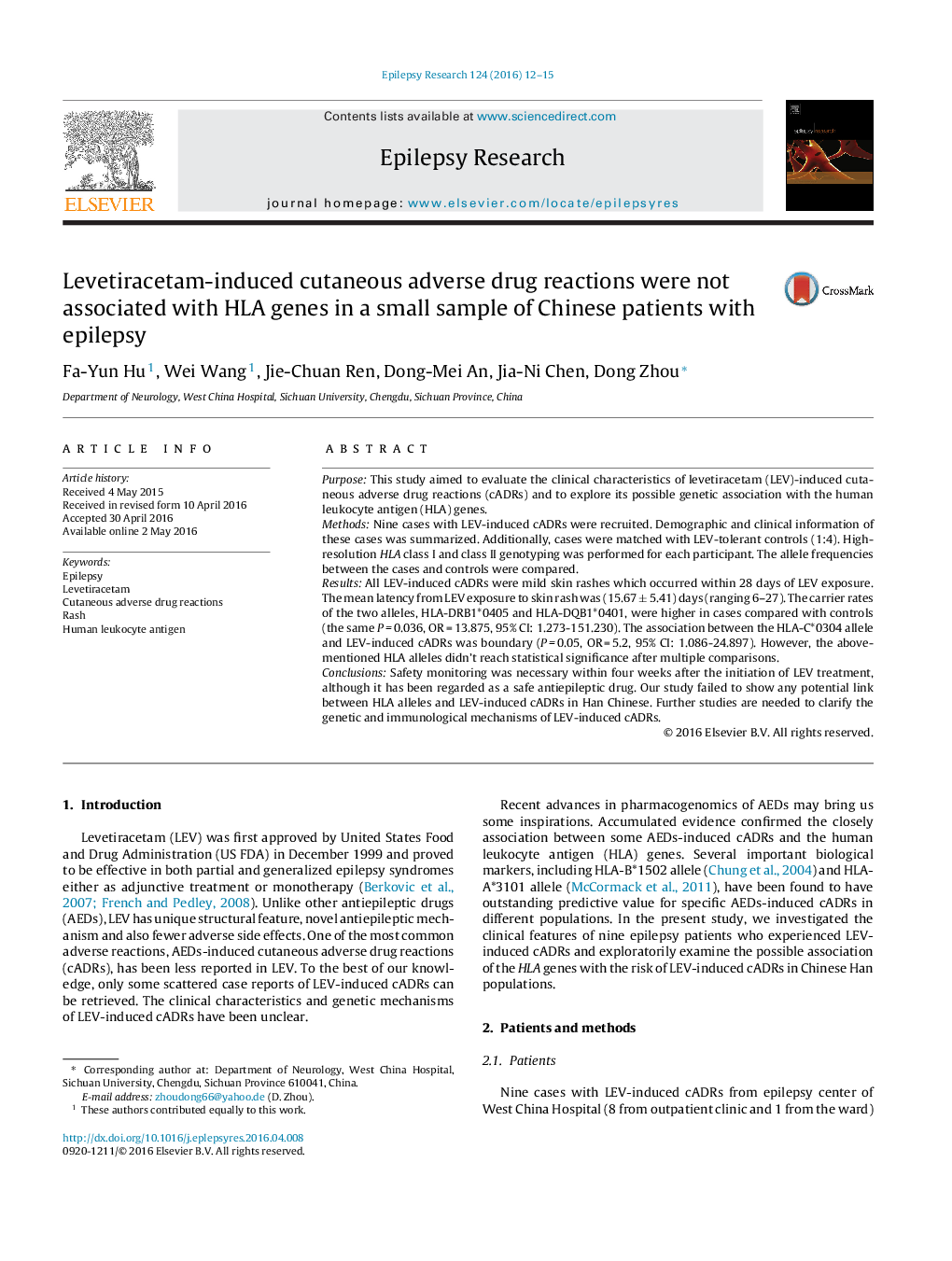| Article ID | Journal | Published Year | Pages | File Type |
|---|---|---|---|---|
| 3051918 | Epilepsy Research | 2016 | 4 Pages |
•The onset of skin rash occurred within 4 weeks of levetiracetam exposure.•The mean latency to skin rash from levetiracetam exposure was (15.67 ± 5.41) days.•Our study failed to show any potential link between HLA alleles and LEV-induced cADRs in Han Chinese.
PurposeThis study aimed to evaluate the clinical characteristics of levetiracetam (LEV)-induced cutaneous adverse drug reactions (cADRs) and to explore its possible genetic association with the human leukocyte antigen (HLA) genes.MethodsNine cases with LEV-induced cADRs were recruited. Demographic and clinical information of these cases was summarized. Additionally, cases were matched with LEV-tolerant controls (1:4). High-resolution HLA class I and class II genotyping was performed for each participant. The allele frequencies between the cases and controls were compared.ResultsAll LEV-induced cADRs were mild skin rashes which occurred within 28 days of LEV exposure. The mean latency from LEV exposure to skin rash was (15.67 ± 5.41) days (ranging 6–27). The carrier rates of the two alleles, HLA-DRB1*0405 and HLA-DQB1*0401, were higher in cases compared with controls (the same P = 0.036, OR = 13.875, 95% CI: 1.273-151.230). The association between the HLA-C*0304 allele and LEV-induced cADRs was boundary (P = 0.05, OR = 5.2, 95% CI: 1.086-24.897). However, the above-mentioned HLA alleles didn’t reach statistical significance after multiple comparisons.ConclusionsSafety monitoring was necessary within four weeks after the initiation of LEV treatment, although it has been regarded as a safe antiepileptic drug. Our study failed to show any potential link between HLA alleles and LEV-induced cADRs in Han Chinese. Further studies are needed to clarify the genetic and immunological mechanisms of LEV-induced cADRs.
